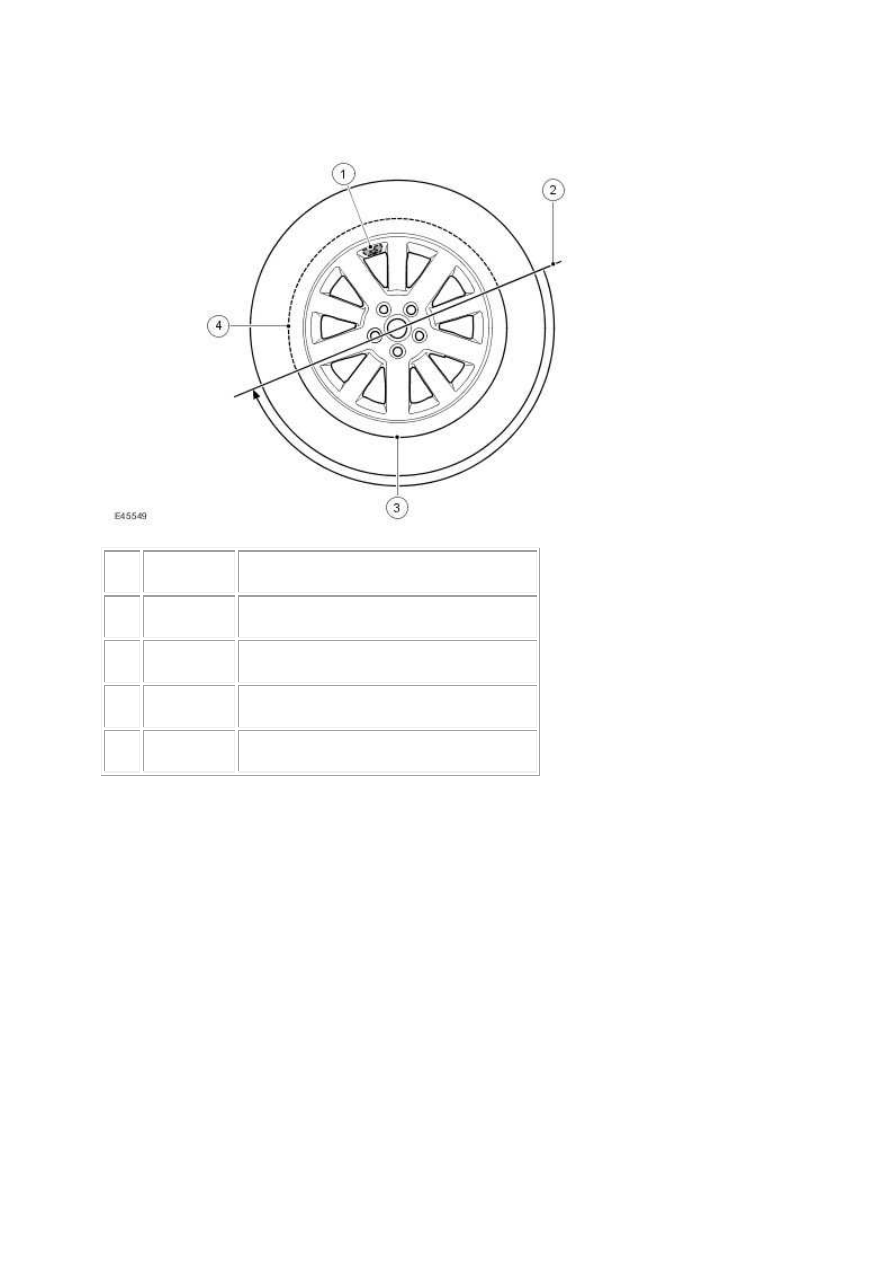Jaguar XJ (X350). Service manual — part 88

Wheels and Tires - VIN Range: H18680-
>H99999
OVERVIEW
A number of wheel and tire size combinations are available. A Tire Pressure Monitoring System
(TPMS) is also available. The system monitors the pressure in each tire and informs the driver if the
pressure falls below predetermined thresholds.
TIRES
Tires are available in a number of different sizes and tread patterns dependent on vehicle
specification. Tire sizes are as follows:
•
T135/80R18 (space saver wheel)
•
235/50R18 Front / Rear
•
255/40R19 Front / Rear
•
255/35R20 Front / Rear.
WARNING: Tires should be inflated to the recommended pressures (as given in the Owners
Handbook) only when the tires are cold (ambient temperature). If the tires have been subjected to
use or exposed to direct sunlight, move the vehicle into a shaded position and allow the tires to
cool before checking/adjusting the pressures.
Tire Changing
On vehicles fitted with TPMS, care must be taken when removing and refitting tires to ensure that
the tire pressure sensor is not damaged.
Vehicles fitted with TPMS can be visually identified by an external metal locknut and valve of the tire
pressure sensor on the road wheels. Vehicles without TPMS will have rubber tire valve.

Item
Part Number
Description
1
Tire valve and pressure sensor
2
Tire fitting/removal tool initial start position
3
High tire and bead tension area
4
Low tire and bead tension area
When removing the tire, the bead breaker must not be used within 90º of the tire valve in each
direction on each side of the tire.
When using the tire removal machine, the fitting arm start position must be positioned as shown in
the tire changing illustration for each side of the tire. The wheel can then be rotated through 180
degrees in a clockwise direction. This will relieve tension from the tire bead allowing the remaining
180 degrees of the tire to be manually pulled from the rim.
When refitting the tire, position the fitting arm as shown. Rotate the tire and take care that the bead
on the low tension side of the tire does not damage the sensor.
TREAD Act - North America Only
Vehicles supplied to the North American markets must comply with the legislation of the Transport
Recall Enhancement, Accountability and Documentation (TREAD) act. Part of the requirement of the
TREAD act is for the vehicle to display a label, positioned on the driver's side 'B' pillar, which defines
www.

the recommended tire inflation pressure, load limits and maximum load of passengers and luggage
weight the vehicle can safely carry. This label will be specific to each individual vehicle and will be
installed on the production line.
This label must not be removed from the vehicle. The label information will only define the
specification of the vehicle as it came off the production line. It will not include dealer or owner fitted
accessory wheels and tires of differing size from the original fitment.
If the label is damaged or removed for body repair, it must be replaced with a new label specific to
that vehicle. A new label is requested from Jaguar parts and will be printed specifically for the
supplied VIN (vehicle identification number) of the vehicle.
TIRE PRESSURE MONITORING SYSTEM COMPONENT LOCATION
Item
Part Number
Description
1
Initiator (4 off)

2
Tire pressure sensor (5 off)
3
Instrument cluster
4
Radio Frequency (RF) antenna
5
TPMS module
NOTE:
A tire pressure sensor is not fitted to a temporary spare wheel.
OVERVIEW
The TPMS is a driver assistance system which assists the driver to maintain the tire pressures at the
optimum level. The TPMS is a standard fitment on NAS vehicles and an optional fitment in other
markets. The TPMS system has the following benefits:
•
Improve fuel consumption
•
Maintain ride and handling characteristics
•
Reduce the risk of rapid tire deflation - which may be caused by under inflated tires
•
Comply with legislation requirements in relevant markets.
CAUTION: The TPMS is not intended as a replacement for regular tire pressure and tire
condition checks and should be considered as additional to good tire maintenance practices.
The TPMS measures the pressure in each of the tires on the vehicle and issues warnings to the driver
if any of the pressures deviate from defined tolerances.
NOTE:
During a 'blow-out' a very rapid reduction in pressure is experienced. The system is not intended
to warn the driver of a 'blow-out', since it is not possible to give the driver sufficient warning
that such an event is occurring, due to its short duration. The design of the TPMS is to assist the
driver in keeping the tires at the correct pressure, which will tend to reduce the likelihood of a
tire 'blow-out' occurring.
The controlling software for the TPMS is located within a TPMS module. The software detects the
following:
•
the tire pressure is below the recommended low pressure value - under inflated tire
•
the position of the tire on the vehicle.
www.

Нет комментариевНе стесняйтесь поделиться с нами вашим ценным мнением.
Текст